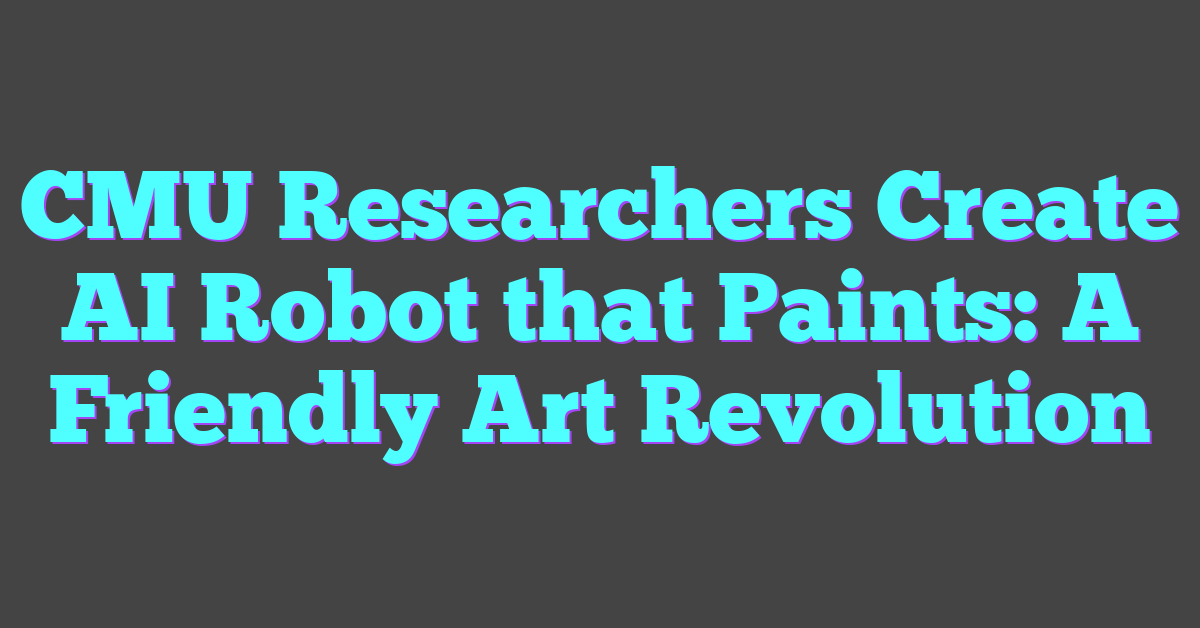Key Takeaways
- AI Transforms Live Shows: Integrates advanced technologies for dynamic lighting, sound, and visuals, enhancing the overall concert experience.
- Real-Time Adaptation: Utilizes machine learning to adjust music and effects based on audience mood and reactions, ensuring an engaging performance.
- Enhanced Audience Interaction: Monitors and responds to audience sentiment, creating personalized and interactive experiences during live events.
- Streamlined Production: Automates technical tasks like sound mixing and equipment calibration, increasing efficiency and reducing production costs.
- Data-Driven Insights: Analyzes performance metrics to inform future strategies, improving audience satisfaction and marketing efforts.
- Future Innovations: Promises personalized performances and advanced interactive technologies, setting the stage for the next generation of live entertainment.
Live performances have always been about the magic of the moment, captivating audiences with energy and creativity. Today, artificial intelligence is stepping onto the stage, transforming how artists connect with their fans. From dynamic lighting effects to real-time music adaptation, AI brings new dimensions to the concert experience.
Imagine a show where every beat resonates perfectly with the crowd’s mood or visuals that change seamlessly with the music’s flow. This integration of AI not only enhances the spectacle but also allows performers to explore innovative creative avenues. As technology continues to evolve, the partnership between artists and AI promises to redefine what’s possible in live entertainment.
Overview of AI in Live Performances
Artificial intelligence transforms live performances by integrating advanced technologies into various aspects of the show. AI-driven systems manage lighting, sound, and visual effects, creating a synchronized and dynamic environment. Machine learning algorithms analyze audience reactions in real-time, allowing performances to adapt instantly to the crowd’s mood and energy levels.

Dynamic Lighting and Visual Effects
AI controls lighting systems to adjust colors, intensities, and patterns based on the music’s rhythm and tempo. This synchronization enhances the visual appeal, making each performance unique. Additionally, AI-generated visuals respond to live inputs, creating immersive backgrounds that complement the performers on stage.
Real-Time Music Adaptation
Machine learning models process live audio inputs to modify musical elements on the fly. This capability enables artists to experiment with new sounds and styles during performances, offering a tailored experience for each audience. Real-time adaptation ensures that the music remains engaging and relevant throughout the event.
Audience Interaction and Engagement
AI-powered tools monitor social media and other platforms to gauge audience sentiment and preferences. This data informs adjustments to the performance, ensuring a more personalized and engaging experience. Interactive elements, such as AI-driven projections and responsive stage props, further connect performers with their audience.
Enhanced Production Efficiency
AI streamlines production processes by automating routine tasks like sound mixing and equipment calibration. This efficiency allows artists and production teams to focus more on creative aspects, improving the overall quality of the live performance. Additionally, predictive maintenance powered by AI minimizes technical issues, ensuring smoother shows.
Data-Driven Insights
Post-performance analysis utilizes AI to examine various metrics, including audience engagement, ticket sales, and social media impact. These insights help artists refine their future performances and marketing strategies, fostering continuous improvement and greater audience satisfaction.
| Application Area | AI Contribution |
|---|---|
| Dynamic Lighting | Synchronizes lighting with music in real-time |
| Visual Effects | Generates responsive and immersive visuals |
| Music Adaptation | Modifies musical elements based on live input |
| Audience Interaction | Tailors performance based on audience sentiment |
| Production Efficiency | Automates sound mixing and equipment calibration |
| Data-Driven Insights | Analyzes performance metrics for future improvements |
AI’s integration into live performances not only enhances the immediate experience but also provides valuable data for ongoing innovation in the entertainment industry.
Applications of AI in Live Music
AI transforms live music by optimizing sound engineering and enhancing visual effects. These technologies create immersive experiences tailored to both artists and audiences.
AI in Sound Engineering
AI revolutionizes sound engineering by automating intricate tasks and enabling real-time adjustments. Machine learning algorithms analyze audio inputs to balance levels, reduce noise, and maintain optimal sound quality. AI-driven systems adapt to different acoustics, adjusting equalization and effects dynamically during performances. Additionally, AI assists in sound mixing by predicting settings based on genre and artist preferences, streamlining the audio production process.
AI-Driven Visual Effects
AI enhances visual effects by synchronizing visuals with live music dynamically. Machine learning models generate lighting patterns and projections that respond to the rhythm and mood of the performance. AI systems monitor audience reactions to adjust visual elements, creating a more engaging atmosphere. Furthermore, generative AI produces unique visual content on-the-fly, allowing for personalized and unpredictable show elements that keep performances fresh and captivating.
Benefits of Using AI in Performances
- Enhanced Audience Engagement
AI analyzes real-time audience data, enabling tailored interactions and dynamic content that resonate with attendees.
- Superior Audio and Visual Quality
Machine learning algorithms optimize sound mixing and synchronize lighting effects with the performance’s rhythm, ensuring a high-quality sensory experience.
- Real-Time Adaptability
AI systems adjust performances on the fly based on crowd reactions, allowing artists to modify elements like tempo and visuals for maximum impact.
- Personalized Experiences
By monitoring individual preferences, AI delivers customized content segments, making each performance unique to the audience’s tastes.
- Streamlined Production Processes
Automation of technical tasks such as equipment calibration and sound engineering reduces setup time and minimizes human error, enhancing overall efficiency.
- Data-Driven Insights
Post-show analytics provide valuable information on audience behavior and engagement, guiding future performance strategies and marketing efforts.
- Innovative Creative Possibilities
AI-generated visuals and sounds offer artists new avenues for creativity, expanding the range of artistic expression available during live performances.
- Cost Efficiency
Automated systems lower operational costs by reducing the need for extensive manual labor and minimizing resource wastage during production.
- Scalability
AI technologies can easily scale to accommodate various performance sizes and venues, ensuring consistent quality across different settings.
- Improved Safety and Reliability
Predictive maintenance powered by AI ensures that equipment functions smoothly, decreasing the likelihood of technical issues during live events.
Challenges and Considerations
Integrating AI into live performances introduces several technical and operational challenges. Ensuring seamless synchronization between AI systems and live elements requires robust infrastructure. Technical limitations, such as latency issues, can disrupt real-time adaptations, affecting the overall experience. Additionally, the high initial cost of implementing AI technologies may pose financial constraints for some production companies.
Data privacy and security concerns emerge when AI systems collect and analyze audience data. Protecting sensitive information is crucial to maintain trust and comply with regulations. Ethical considerations also arise regarding the extent of AI involvement in creative processes, potentially impacting artists’ creative control.
Skill requirements represent another significant consideration. Production teams must possess expertise in both AI technologies and live performance dynamics to effectively manage and troubleshoot AI-driven systems. Continuous training and education are necessary to keep up with rapid advancements in AI.
Reliability and maintenance of AI systems are essential for consistent performance. Frequent technical issues or system failures can disrupt live events, leading to dissatisfaction among audiences and performers. Implementing predictive maintenance strategies can mitigate these risks by addressing potential problems before they occur.
Audience acceptance plays a critical role in the successful adoption of AI in live performances. Some audience members might prefer traditional performances, valuing the human element over technological enhancements. Balancing AI integration with preserving the authenticity of live experiences is essential to cater to diverse audience preferences.
Finally, scalability presents a challenge when expanding AI applications across different performance sizes and venues. Ensuring that AI systems can adapt to varying scales without compromising performance quality requires careful planning and resource allocation.
Future of AI in Live Entertainment
AI advancements will drive more personalized performances, enhancing audience satisfaction. Machine learning algorithms analyze real-time data to adjust lighting, sound, and visuals based on crowd reactions.
Personalized Audience Experiences
AI systems tailor performances by monitoring audience sentiment and preferences. Data from social media and wearable devices inform adjustments, creating unique experiences for each event.
Enhanced Interactivity
Interactive technologies powered by AI enable audience participation. Virtual reality (VR) and augmented reality (AR) integrations allow fans to engage with performances in immersive ways.
Advanced Visual and Audio Technologies
AI-generated visuals synchronize seamlessly with live music, offering dynamic and ever-changing displays. Sound engineering evolves with real-time audio adjustments, ensuring optimal acoustics in various venues.
Streamlined Production Processes
Automation through AI reduces production time and costs. Tasks like lighting setup, sound mixing, and equipment calibration become more efficient, allowing production teams to focus on creative aspects.
Expansion of Hybrid Events
AI facilitates the integration of virtual and physical elements in live performances. Hybrid events reach wider audiences by combining on-site and online experiences, supported by intelligent streaming and interaction tools.
Data-Driven Decision Making
Comprehensive data analysis empowers artists and producers to make informed decisions. Insights into audience behavior and preferences guide future performance strategies and marketing efforts.
Sustainability and Efficiency
AI optimizes resource usage, promoting sustainable practices in live entertainment. Energy-efficient lighting and automated equipment management contribute to greener productions.
Scalability and Accessibility
AI technologies adapt to various performance sizes, ensuring high-quality experiences for small venues and large arenas alike. Enhanced accessibility features make live events more inclusive for diverse audiences.
Predictive Maintenance and Reliability
AI-driven predictive maintenance ensures equipment reliability, minimizing technical disruptions during performances. Regular monitoring and automated diagnostics keep systems running smoothly.
Emerging Technologies Integration
Future live performances will incorporate emerging technologies like holography and advanced robotics, all managed by AI systems. These innovations expand creative possibilities and elevate the overall entertainment experience.
Table: Projected Growth of AI in Live Entertainment
| Year | Market Size (USD Billion) | Key Developments |
|---|---|---|
| 2024 | 1.2 | Enhanced data analytics tools |
| 2026 | 2.5 | Widespread adoption of AR and VR |
| 2028 | 4.0 | Integration of holography and robotics |
| 2030 | 6.5 | Fully automated production processes |
By leveraging these advancements, the live entertainment industry will achieve greater innovation, efficiency, and audience engagement.
Conclusion
AI is truly reshaping the live performance landscape opening up new possibilities for artists and audiences alike. By seamlessly integrating technology with creativity artists can deliver experiences that are more immersive and engaging than ever before. As AI continues to evolve the future of live entertainment looks brighter and more dynamic promising unforgettable moments for everyone involved.




